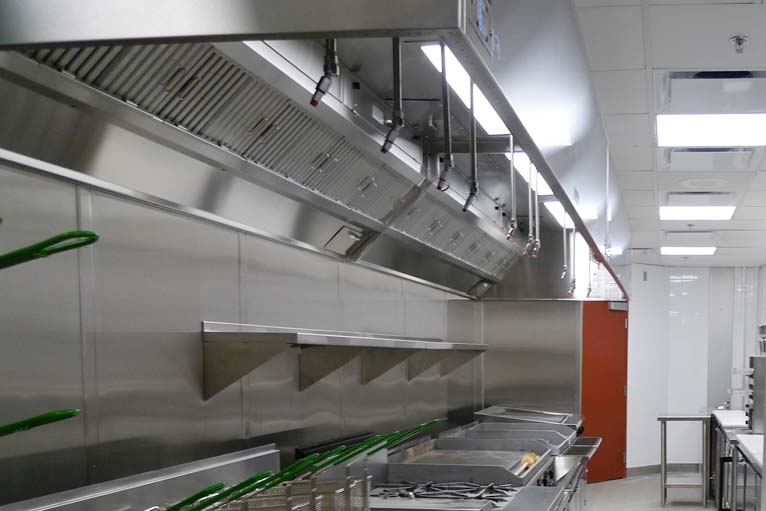A key function of any Kitchen Ventilation Canopy (Exhaust Hood), or Ventilated Ceiling, is its ability to catch the heat and fumes rising from the cooking appliances and to hold them until they can be drawn through the grease extractors and then into the exhaust system. This process is referred to as “Capture and Containment” and is often shortened to simply “C&C.”
In order to understand the mechanics of C&C fully, it is first necessary to appreciate the importance of “The Thermal Plume.”

> The higher the free distance between cooking appliances and the canopy, the larger the thermal plume
> Exhaust airflow can’t be lower than the thermal plume
> The goal is to exhaust steam and particles with airflow as near as possible to the thermal plume
What is Thermal Plume
The Thermal Plume, in simple terms, is the expanding column of rising gas and particulate emanating from each item of cooking equipment while in operating mode. A free convection flow forms above each kitchen appliance due to differences in temperature or density between;
- The air which warms up in contact with cooking appliances,
- The ambient air
The flow pattern forms a plume that concentrates all thermal and weight transfers. The plume is fed with ambient air from a low level.
The Thermal Plume can be regarded as a free stream above the cooking point, which draws air from the environment. Particles near the stream are carried with it

ASTM 1704 Testing
This test method measures the efficiency of an exhaust hood in a controlled environment. Exhaust rates are established for the tested hood with a range of appliances underneath. When full capture & containment is achieved at a given cooking duty, it can be compared to other hood systems under the same test conditions. U.L.710 is a fire safety test and does not measure hood efficiency. U.L. 710 establishes the minimum exhaust rate for the removal of visible smoke.

Vital Conditions for Good Capture & Containment for Canopies and Exhaust hoods.
- CONTROL of the DRIVING SPEED at the front of the canopy to lead the Thermal Plume inside the containment volume
- CONTAINMENT CAPACITY of the canopy to store the pollutants peaks before they are exhausted
- NET EXHAUST AIRFLOW at the entrance of the containment volume
- NO DRAUGHTS inside the containment volume of the canopy
The Importance Of The Correct Overhangs
Notwithstanding the importance of Thermal Plume technology, this counts for nothing if the correct canopy overhangs were not taken into account when the canopy sizes were initially established. Good practice and U.L. listing stipulates the minimum overhangs required at the front and ends of the various types of the canopy and the increased overhangs over Combination Ovens, Solid-Fuel appliances, etc.

Should you require help in selecting an exhaust hood or canopy with proper capture and containment for your facility, the experts that manufacture these types of units can guide you on the proper selection needed to meet your requirements.
Read another article relating to commercial kitchen exhaust hoods or canopies: The Radiant Chef – How does radiant heat affect your chef’s and kitchen staff’s comfort?
Subscribe today to kitchenventilation.com and don’t miss an article!
Stay up to date by subscribing to Halton’s Commercial Kitchen Ventilation Blogs by entering your email address to subscribe and Halton will provide you with the latest information on commercial kitchen exhaust hoods, pollution control units, air handling, and safety systems. You will receive notifications of new posts by email.

